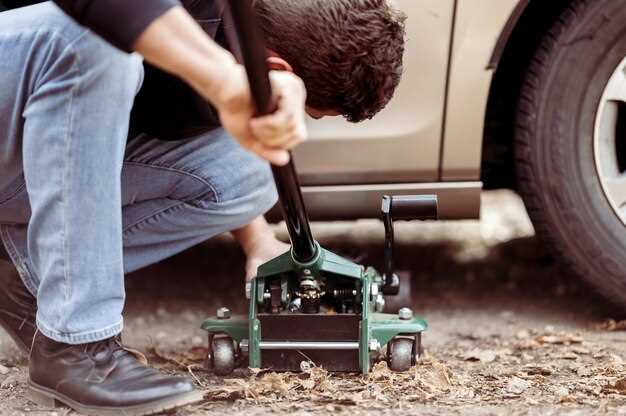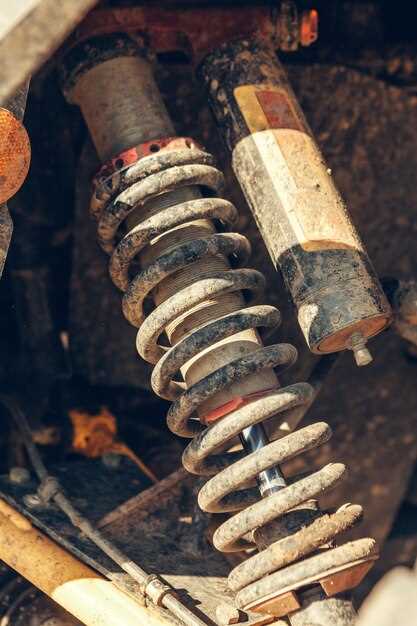
When it comes to maintaining your all-terrain vehicle (ATV), focusing on suspension components is crucial for safe and efficient operation. The shocks play a pivotal role in absorbing impacts and providing a smooth ride, making regular inspection essential. Not only does this ensure your ATV performs optimally, but it also helps in preventing further damage that can result from neglected maintenance.
To effectively check the suspension system, it is important to understand the various elements that contribute to its functionality. This includes inspecting the shock absorbers, springs, links, and other related components for any signs of wear and tear. Discoloration, leaks, and unusual noises can all be indicative of underlying issues that require immediate attention. Performing these inspections regularly guarantees a longer lifespan for your ATV, as well as improved rider safety.
In this article, we will delve into the specific techniques and tips needed to carry out a thorough suspension damage inspection. Whether you are a seasoned ATV enthusiast or a beginner, understanding these inspection methods can enhance your riding experience and prolong the life of your vehicle.
Identifying Common Signs of ATV Suspension Wear

Regular inspection of your ATV’s suspension is crucial for maintaining optimal performance and safety. One of the primary components to check is the shocks, which absorb impacts and provide stability. Signs of wear can greatly affect your riding experience.
First, inspect the shocks for any visible damage. Look for oil leaks, which indicate that the seals may be compromised. If you notice excessive oil residue around the shock body, it’s a clear sign that the shocks may need to be replaced.
Next, pay attention to any unusual noises while riding. Clunking or squeaking sounds could suggest worn out bushings or mounts in the suspension system. If you hear these noises, it’s important to check the suspension thoroughly to prevent further damage.
Additionally, an uncomfortable ride or excessive bouncing when traversing rough terrain can signal wear or failure of the shocks. If the ATV doesn’t absorb bumps as it should, it may lead to an unstable ride and affect your control.
Another important aspect to monitor is the alignment of the ATV. Uneven tire wear or a noticeable pull to one side can indicate suspension issues. Checking the alignment regularly helps in identifying potential suspension problems early on.
Lastly, monitor any changes in handling or steering response. If the ATV feels stiff or difficult to maneuver, it might be time to examine the shocks and overall suspension setup. Regular checks and timely maintenance can extend the life of your ATV suspension and enhance your riding experience.
How to Properly Inspect ATV Shocks for Damage

To ensure optimal performance and safety of your ATV, it is crucial to regularly check the shocks as part of the suspension system. Begin by visually inspecting the shocks for any signs of physical damage such as dents, cracks, or rust. Pay close attention to the mounting points, as these areas can experience significant stress and wear.
Next, check for oil leaks around the seals of the shocks. A loss of fluid can indicate internal damage, which may compromise the shock’s functionality. Use a clean cloth to wipe around the seals and observe if any fluid seeps out. If you discover a leak, replacement may be necessary.
Additionally, assess the overall compression and rebound performance by manually compressing the shock and releasing it. The shock should move smoothly without any stuttering or sticking. If the shock does not return to its original position quickly, it may be damaged internally.
Check the mountings and bushings for wear and tear. Worn bushings can lead to excessive movement and affect the overall stability of the ATV. Ensure that all bolts and nuts are tightly secured, as loose components can cause further damage to the suspension system.
Lastly, conduct a functional test by riding the ATV over varied terrain. Pay attention to how the suspension performs while traversing obstacles. Unusual noises, excessive bouncing, or poor handling may signal shock or suspension damage that needs immediate attention.
Maintenance Practices to Extend Suspension Life
Regular maintenance is crucial for prolonging the life of your ATV’s suspension system, particularly the shocks. By implementing a few essential practices, you can ensure that your suspension remains in optimal condition and performs effectively during your rides.
1. Routine Inspection: Periodically inspect the suspension components for any signs of wear or damage. Pay close attention to the shocks for signs of leaking fluid, as this can indicate that they are no longer functioning properly. Look for any cracks, bends, or unusual noises that may suggest underlying issues.
2. Cleaning: After each ride, clean the suspension system, especially the shock absorbers. Dirt and debris can accumulate and cause premature wear. Use a soft cloth and a mild cleaner to wipe down each component, ensuring that grease and grime are removed. This will help maintain the integrity of the seals and prevent corrosion.
3. Adjusting Sag: Set the sag correctly according to your weight and riding style. Proper sag adjustment ensures that the suspension operates within its designed parameters, enhancing both comfort and handling. Refer to your ATV’s manual for specific guidelines on the correct sag settings.
4. Lubrication: Keep all moving parts of the suspension system well-lubricated. Regularly check and apply appropriate grease to pivot points and bushings to minimize friction and wear. Always use the lubricant recommended by your ATV manufacturer to ensure compatibility and effectiveness.
5. Protect Components: Utilize protective covers or guards for your shocks to shield them from rocks, mud, and other environmental hazards. This additional layer of protection can prevent physical damage and keep the suspension system functioning smoothly.
6. Avoid Overloading: Be mindful of your ATV’s weight limits. Overloading can severely impact the suspension and shocks, leading to premature failure. Always adhere to the manufacturer’s weight guidelines to keep your suspension system intact.
7. Professional Servicing: Consider having your suspension system professionally serviced at regular intervals. Experienced technicians can conduct thorough inspections and address any issues that may go unnoticed. They can also perform rebuilds or replace worn components, ensuring your ATV remains safe and reliable.
By following these maintenance practices, you can significantly extend the life of your ATV’s suspension system and ensure a smoother, safer ride for years to come.
 Skip to the content
Skip to the content 